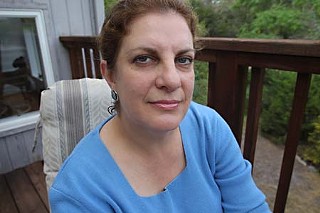Caging Children
A new study from the LBJ School suggests that it's a bad idea
By Richard Whittaker, Fri., Aug. 28, 2009

Children under the age of 18 can't vote, serve as jurors, or join Blockbuster, but in the U.S. – the only developed nation with such a policy – they can be tried in adult courts and imprisoned in facilities designed for adults. A groundbreaking study from the University of Texas' LBJ School of Public Affairs could kick-start a national discussion about the foolishness of that policy.
The report, "From Time Out to Hard Time: Young Children in the Adult Criminal Justice System," was compiled by Michele Deitch, an adjunct professor at the LBJ School, and her students. Its roots were tragic: Deitch and her group worked with the UT Law School Supreme Court Clinic on the case of Christopher Pittman, who, at age 12, was charged with killing his grandparents. He received a 30-year sentence – the mandatory minimum in South Carolina. After the Supreme Court rejected his appeal, Deitch explained, "we were sitting on a ton of research that we had done, so we thought it was vital to get it out there."
Their research showed Pittman is hardly alone: On average, 80 children a year aged 13 and younger have their cases transferred from juvenile to adult courts. On a single day in 2008, there were 7,703 children held in adult jails nationwide. Once there, they are more likely to get assaulted by fellow inmates or guards than are adults. And once released, they are more likely to reoffend than minors that stay in the juvenile system. "Just labeling someone an adult doesn't make them adult," said Deitch.
She also found that it's not just the most heinous crimes that get kids moved to the adult justice system. Between 1995 and 2004, 190 children under 12 were tried as adults for crimes against persons, but 19 kids were there on drug charges. Among children under 12, boys are more likely to be transferred from juvenile to adult courts than girls. Similarly, while African-Americans only represent 13% of the national population, they make up 54% of the transferred prison population.
Scott Medlock, prisoners' rights program director with the Texas Civil Rights Project, called the transfer policy "a symptom of the 'tough on crime' mentality that our politicians adopt generally" and one that has been outpaced by advances in developmental science. He noted: "All the research shows that people's brains aren't fully formed until they are around the age of 25. There are a lot of people in prison for something that they did before then, but the law doesn't recognize that they might be an entirely different person."
On the national stage, perhaps surprisingly, Texas isn't the worst offender when it comes to treating children like adults. In fact, Deitch singles out the Capital and Serious Violent Offender Treatment Program at the Texas Youth Commission's Giddings State School as a particularly successful initiative. Lori Robinson, now TYC's director of specialized treatment, was director of clinical services at Giddings. She explained that the yearlong program of intensive and emotionally intense group therapy directs child offenders to explore, explain, and examine their lives before incarceration. She said, "What we find is that many of our kids do the same things over and over and over again, and the crimes escalate." By tackling these developmental issues, the program has paid dividends, cutting recidivism rates by 57%. Robinson plans to roll out the lessons learned systemwide.
However, there remains the larger question of whether Texas sends too many people, adults or children, to jail. Steve Hall, chief of staff to former Attorney General Jim Mattox and now director of the StandDown Texas Project, sees the overdependence on juvenile incarceration as an aspect of the expansion and commercialization of prisons. When Mattox was A.G. (from 1983 to 1991), "Texas had about 35,000 inmates in the prison system," Hall recalls. "Today we have more than 35,000 employees and about 155,000 incarcerated."
Deitch's paper has received national coverage, with newspapers including the Pittsburgh Tribune-Review (of Pennsylvania, where children can receive mandatory life sentences without parole) and the Anderson Independent Mail (of South Carolina, the state with the worst record of sending preadolescent children to adult prisons), reflecting on its lessons. It was also the subject of a New York Times op-ed, which called the incarceration of children in adult facilities "terrible public policy" (New York is one of three states where children over age 15 are automatically transferred to adult court). While the report reveals some worrying truths, Hall described it as timely and added, "I believe that we are at the beginning of a reappraisal of this cycle of overincarceration."
The complete report is available on the LBJ School website at www.utexas.edu/lbj/news/story/856.
How States Treat Their Kids
22 Number of states with no statutory minimum age for transferring murder cases
3 Number of states with no minimum age for transferring juvenile cases to adult court
34 Number of states with "once an adult, always an adult" rules
10 Number of states with maximum age of juvenile court jurisdiction below 17
Got something to say on the subject? Send a letter to the editor.








